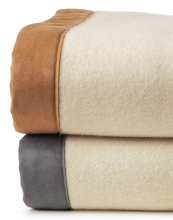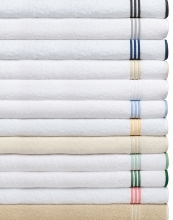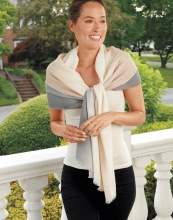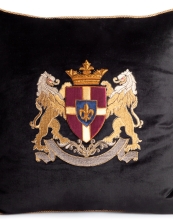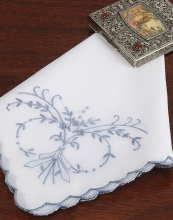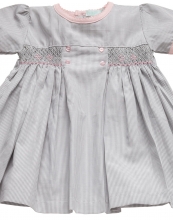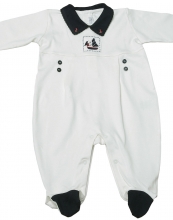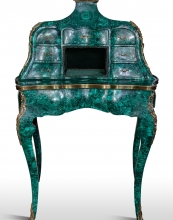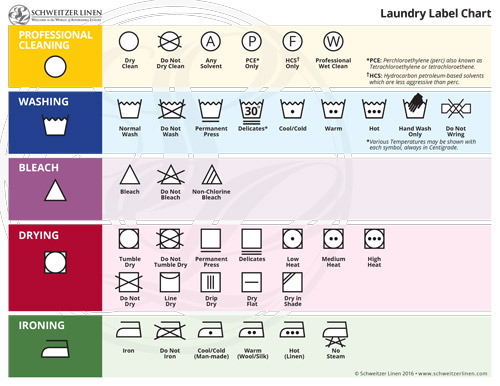Help Center
- Egyptian Cotton: Probably the finest cotton in the world. Egyptian cotton naturally has extremely fine, extra long fibers.
- Pima Cotton: A very fine, long staple cotton originally grown by the Pima Indians in Arizona.
- Supima Cotton: A scientifically developed, extra strong staple cotton with fibers of a uniform length. Produced only by the Supima (Superior Pima) Association of America.
- American Cotton: The standard cotton fiber in the US, usually woven into combed cotton yarn.
- Linen: is made from the fibers of the flax plant. Linen is laborious to manufacture, but the fiber is very strong (It has a long staple fiber length relative to cotton and other fabrics), absorbent and dries more quickly than cotton. Bedding made of linen feature exceptional coolness and freshness in hot and humid weather. It’s strength also means it lasts a long time - how long? Ask Pharaoh Ramses II, he was found with his linen wrappings in a state of perfect preservation after more than 3000 years!
Sleeping in our linen is a different experience that sleeping in cotton - is isn’t as smooth or “soft” as our 300 or 600 thread count sateen or percale but it can be far more comfortable in warm, humid climates and during summer. The tendency to wrinkle is also considered part of linen's particular "charm", and our modern linens are designed to be air-dried without the necessity of ironing. - Parts excerpted from Wikipedia.
What is the difference between Sateen & Percale?
- Percale: A term used to describe the weave where each thread goes over or under the next resulting in a silky smooth, very strong, 100% cotton fabric with a matte finish. We have generally two Percales; a 300 thread count and a 600 thread count (most Percale is 180-200 thread count).
- Sateen: A weave where the warp thread goes over 4 weft threads, then under one, then over 4 again. This results in a very soft and smooth surface that scatters less light, giving it a greater sheen than Percale. Our printed sheets are usually 300 thread count and the embroideries are usually on 600 thread count. We also have sheets up to 1000 thread count.
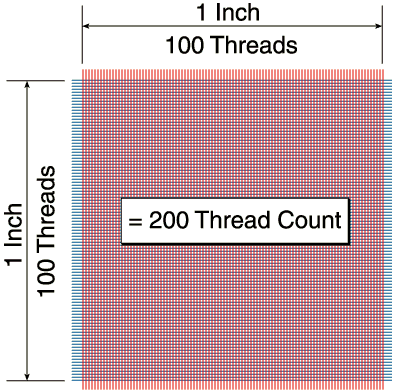

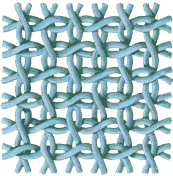
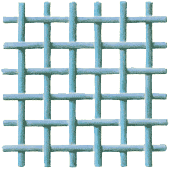
See also: What do those Laundry label symbols REALLY mean?
Everyone has seen them, the little diagrams on linen and clothes labels that tell you how to care for the fabric. People look at them and promptly forget them because understanding what they mean is beyond most of us.
Here are a few tips to think about before tossing your beautiful Schweitzer linens in the wash with the great t-shirt you bought from that designer at the street fair - you know, the RED one!
The symbols are designed around five groups: (Group 1) Professional Cleaning; (Group 2) Washing; (Group 3) Bleach; (Group 4) Drying and (Group 5) Ironing.

Notes on the Chart.
Dots indicate heat, the more dots the hotter.
Bars under the icon indicates gentle, the more bars, the more gentle treatment needed.
Group 1) Professional Cleaning: Sometimes just labeled “Dry Clean” but there is a whole set of icons for Professional WET washing, I’ve only included the main one here. There are a few other Dry Cleaning icons in addition, most specifying technical requirements of solvents and stress levels of textiles. Rule of thumb - if the label has a circle, take it to the professionals. Always make sure your professional checks the label when you hand over the cleaning!

Group 2) Washing: Symbols can contain various maximum temperatures indicated and they are always specified in Centigrade, so for the US take that into account and convert to Fahrenheit. Here is a list of the most commonly used indicators:
30˚C = 85˚ F - Cool;
40˚C = 105˚F - Warm;
50˚C = 120˚F - Hot;
60˚C = 140˚F - Hot;
70˚C = 160˚F - Hot;
95˚C = 200˚F - Boiling (almost);
It is assumed that most symbols are for Machine washing, so be sure to check the controls on your washing machine and familiarize yourself with the manual - it really does make a difference!

Group 3) Bleach: We do not advocate using bleach as it can weaken and discolor fabrics. If you must use bleach use a chlorine-free version.

Group 4) Drying: As in Washing, this mostly refers to Machine drying, but that can be too aggressive for some fabrics. Ideally remove linens from the dryer whilst still slightly damp.

Group 5) Ironing: Man-made articles should always be ironed with a cool setting. High quality cotton and linen, like Schweitzer’s, should be ironed damp, never dry, use a spray bottle if needed. Always iron on the reverse side, usually with a “hot” or “cotton” setting.

Print the full chart.
I hope you find this information useful and if you want to print a complete chart to pin up in your wash room click the thumbnail below to open or download the full Schweitzer Linen laundry Label Chart PDF,
It is formatted to fit on a standard 8 1/2” x 11” sheet of paper.
See also: Care & Washing Instructions
Sources:
https://en.wikipedia.org/wiki/Laundry_symbol
http://www.ginetex.net/files/pdf/gin_pfle_bro_ch_gb_web_rz.pdf
http://www.textileaffairs.com/c-common.html
http://www.care-labelling.co.uk/whatsymbolsmean.html
http://www.care-labelling.co.uk/whatsymbolsmean.html
https://www.persil.co.uk/laundry-tips/wash-care-symbols
https://www.persil.co.uk/laundry-tips/wash-care-symbols/
https://www.ic.gc.ca/eic/site/oca-bc.nsf/eng/ca02009.html
Please allow up to 10 working days to receive your order. If your delivery seems late please use the "Status Request" link at the foot of the home page and we will let you know the situation.
95% of all orders are shipped within 48 hours via ground service for delivery within 6 to 8 days (within the 48 contiguous States).
Custom and Monogrammed Linens will require more time. Most of our custom work is done in Italy, so please allow between 4-8 weeks. Our customer service liaison will discuss this with you at the time of order.
Our shipper of choice is UPS and they handle all or domestic as well as International deliveries.
95% of all orders are shipped within 24-48 hours via ground service for delivery within 6 to 8 days (within the 48 contiguous States).
Custom and Monogrammed Linens will require more time.
Please Note: All shipping costs displayed in the shopping cart during checkout and in our price chart refer only to the 48 contiguous States. Shipping to Alaska, Hawaii & Puerto Rico will entail additional costs that must be approved by the customer prior to shipping.
All orders over $300.00 must be shipped with "Signature Required". Schweitzer Linen cannot be held responsible for mislaid or stolen packages.
*Free Shipping (if offered) refers to Free Ground shipping with applicable coupon and offer only. Valid only when shipping within the lower 48 contiguous states. Not valid when shipping to multiple addresses. No adjustments to prior purchases. Free shipping is valid for online orders only.
International Shipping: We will gladly ship to most foreign destinations, however the costs must be approved by the customer prior to shipping. Also, it must be noted that orders shipped to destinations outside the US may be subject to import taxes, duties and other fee’s that we have no control over. The recipient is the importer of record and must comply with all laws and regulations of the destination country and is solely responsible for all charges whatever they might be. Customs policies vary country-to-country and the recipient is strongly urged to contact their local customs office for more information. Customs clearance procedures, if not properly adhered to, may cause delays.
Special Deliveries: For urgent deliveries we offer next day, second day or third day air at an additional cost, providing all items are in stock. If that option (overnight) is selected then a Schweitzer representative will contact you directly to discuss costs and any special delivery instructions or please call our toll-free number (1.800.554.6367) and speak to customer service or email us using the "Feedback" tab on the top right of our website home page.
Our Customer Care team are here to help with any problems... Please telephone them on 718.805.2122
If you have forgotten your password, click the Login Link on the home page (Top Right) and in the new window click the "Forgotten Your Password?" link. In the text field enter your email address and we will email your password, as long as that email address matches the email address associated with your account.

We accept all major credit cards. If an unfamiliar credit card is submitted then we will probably call you to verify.
We do not retain any credit card information on the website, in your account information or in any databases.
For other methods of payment or other questions about payments or charges etc., please call our customer service at: 718.805.2122
We often give extra discounts to our customers in the form of Coupon Codes. These can be available on the website (usually on the home page) and/or at a landing page for a Special Offer or, more usually as part of an email to our Newsletter subscribers. Most times the code will NOT be able to be combined with any other offer but there are occasional exceptions. These codes are usually for specific promotions and will have an expiration date applied to them.
If you sign up for our Newsletter — as a "Thank You" — you will receive an email with a one-time code offering 10% Off your next order. It cannot be combined with any other offer or promotion, or for items in the "Close-out" section and is not able to be used more than once. If you unsubscribe from the newsletter then re-subscribe, it will not work. This code also cannot be used during site-wide, blanket discounts that we sometimes run. However, it does not expire, so you can hold onto it for use in the future.
- We do not allow discount codes to be combined with other offers. No "double-dip" to give a greater discount on any specific product or sale item.
- We do allow multiple coupon codes to be claimed so long as the codes are for different offers and they are current and on-going.
- You may enter multiple codes in the same Coupon code field, separated by a comma.
- Our coupon codes will have an expiration date, after which the discount will not be honored.
- When "Site-wide, No Coupon Code Required" Offers are in effect, any active coupon codes will be disabled by default [see (1) above] for the period of the Offer.
- Products featured in the "Close-out" section are excluded from all promotions.
- Products featured in the "Antiques" section are excluded from all promotions, however we are open to discussion regarding the sale price displayed. Call us!
- Free Shipping (if offered) refers to free Ground shipping with applicable coupon and offer only. Valid only when shipping within the 48 contiguous states. Not valid when shipping to multiple addresses. No adjustments to prior purchases. Free shipping is valid for online orders only.
- If you have any questions regarding a specific code or promotion please call our customer service at 718.805.2122.
- We offer special discounts on selected merchandise throughout the year, most will be announced through our Email Newsletter (a great reason to sign up!) and we will often feature them on our home page.
- Most special discounts (and Free Shipping offers) are linked to a coupon code, but occasionally we will offer site-wide discounts on all orders which do not require codes to be entered.
- Redeem coupon codes by entering the code in the appropriate text field found on the Shopping Cart Page during checkout and clicking “Apply”. The same field is also available on the “Summary” page later in the Check-out process.
- Apply Coupon Code on Shopping Cart Page.
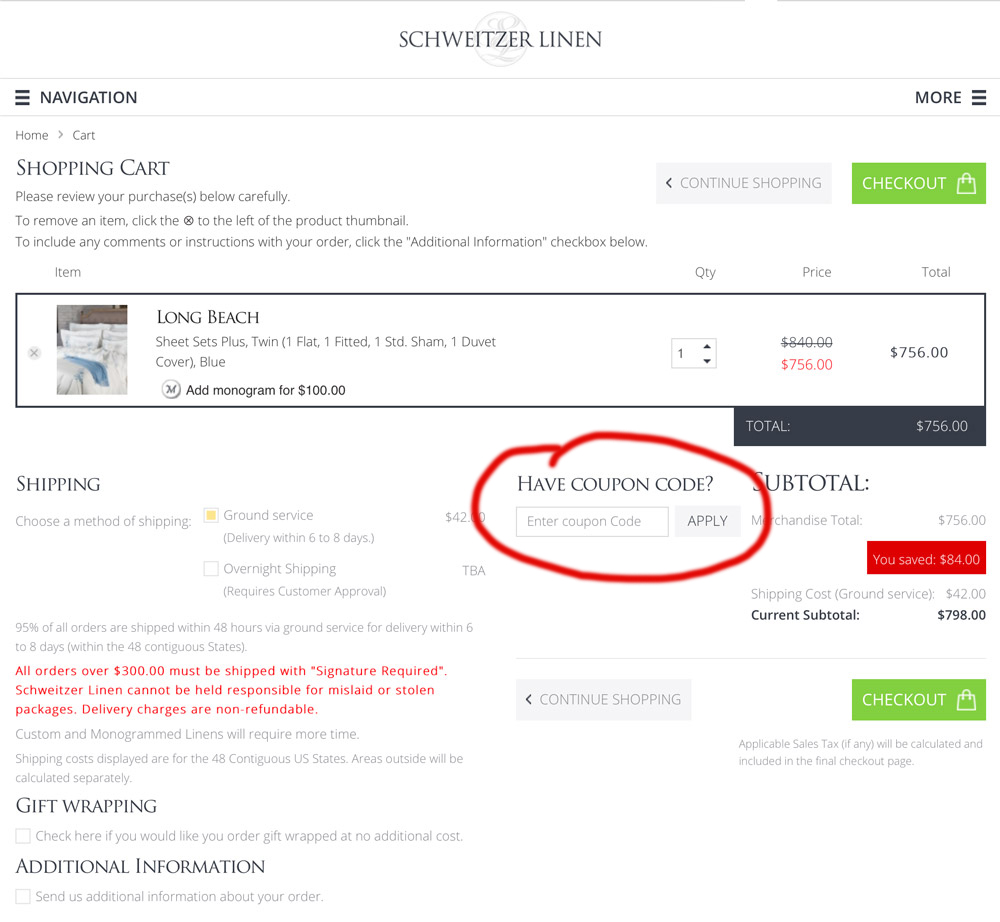
- Apply Coupon Code on Summary Page.
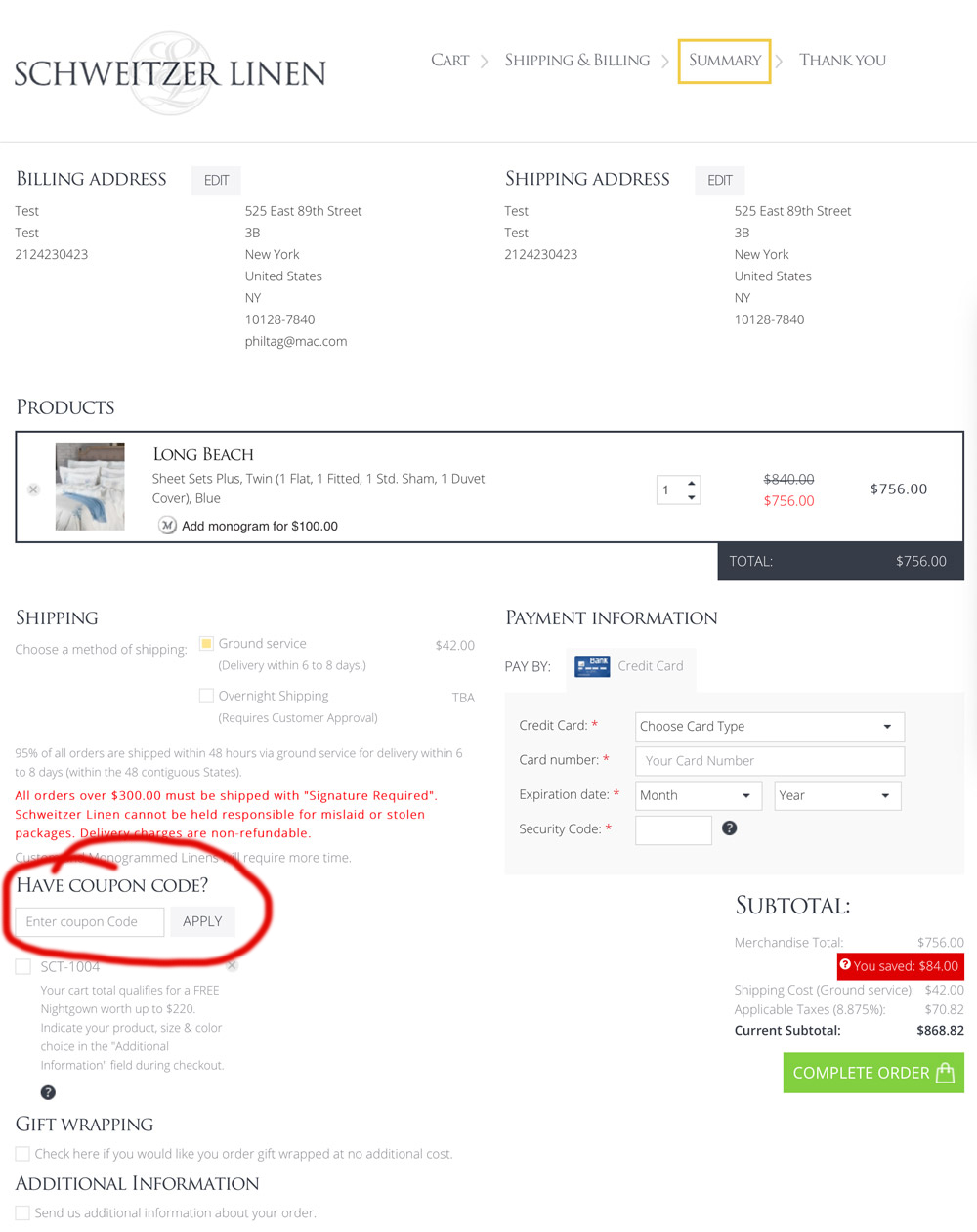
- Free Shipping may be offered alongside a code-based product offer and may be combined.
- Current offers are also available when shopping in our 3 Manhattan retail locations, So do pop-in, we'll be pleased to see you!
Bed Linens Size Guide
Use this Bed Sheet Size list to make sure the linens you choose are right for your bed. Most sheets come in standard sizes but if you have a bed that requires a custom size (think RV or Yacht) we can supply that too, on a special order basis.
| Standard | 20" x 26" |
| European (Square) | 26" x 26" |
| King | 20" x 36" |
| Boudoir | 12" x 16" |
| Neckroll | 6" x 14" |
| Twin | 39" x 75" x 14" |
| Twin Extra Long | 39" x 80" x 14" |
| Full | 54" x 75" x 14" |
| Queen | 60" x 80" x 14" |
| King | 78" x 80" x 14" |
| California King | 72" x 84" x 14" |
| Standard Pocket | 14" Deep |
| Extra Deep Pocket (avail. in Ivory or White) | 18" Deep |
| Other pockets depths may be custom ordered |
| Twin | 70" x 102" |
| Full/Queen | 90" x 110" |
| King | 108" x 110" |
| Twin | 68" x 86" |
| Full/Queen | 86" x 86" |
| King | 102" x 86" |
| Twin | 70" x 90" |
| Full* | 84" x 90" |
| Full/Queen | 95" x 95" |
| King | 108" x 95" |
| * Not all designs available in true "Full" size |
| Twin | 70" x 90" |
| Queen | 90" x 90" |
| King | 106" x 90" |
Some sizes may vary slightly from design-to-design.
HELP SAVE THE BEES!
We believe this is of vital importance and we will donate to our favorite Bee Conservancy every time a purchase of this beautifully inspiring bedding is made! Join us on this vital effort...
Be the solution to help protect bees in crisis
Honey bees — wild and domestic — perform about 80 percent of all pollination worldwide. A single bee colony can pollinate 300 million flowers each day. Grains are primarily pollinated by the wind, but fruits, nuts and vegetables are pollinated by bees. Seventy out of the top 100 human food crops — which supply about 90 percent of the world’s nutrition — are pollinated by bees.
Worldwide bee colony collapse is not as big a mystery as the chemical industry claims.
The systemic nature of the problem makes it complex, but not impenetrable. Scientists know that bees are dying from a variety of factors—pesticides, drought, habitat destruction, nutrition deficit, air pollution, global warming and more. Many of these causes are interrelated. The bottom line is that we know humans are largely responsible for the two most prominent causes: pesticides and habitat loss.
Worker bees (females) live about six weeks in summer and several months in the winter. Colonies produce new worker bees continuously during the spring and summer, and then reproduction slows during the winter. Typically, a bee hive or colony will decline by 5-10 percent over the winter, and replace those lost bees in the spring. In a bad year, a bee colony might lose 15-20 percent of its bees.
In the U.S., winter losses have commonly reached 30-50 percent, in some cases more. In 2006, David Hackenberg — a bee keeper for 42 years — reported a 90 percent die-off among his 3,000 hives. U.S. National Agricultural Statistics show a honey bee decline from about 6 million hives in 1947 to 2.4 million hives in 2008, a 60 percent reduction.
The number of working bee colonies per hectare provides a critical metric of crop health. In the U.S. — among crops that require bee pollination — the number of bee colonies per hectare has declined by 90 percent since 1962. The bees cannot keep pace with the winter die-off rates and habitat loss. Read more...
If you want to learn more about the importance this project is, here are some other links to help:
Top 9 Charities to help save the bees


